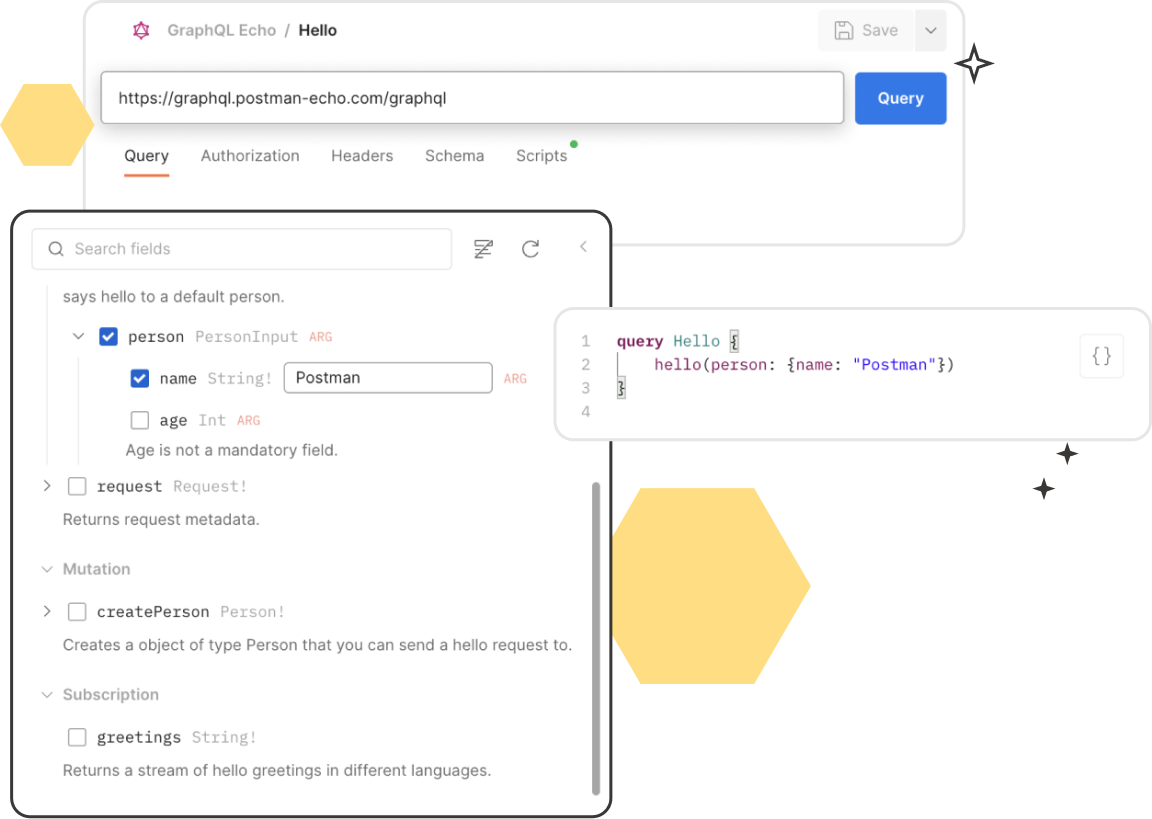
How does the Postman GraphQL client work?
The Postman GraphQL client, which expands on Postman's core API client functionality, offers a powerful and efficient way to work with GraphQL APIs. With Postman's GraphQL client, you can:
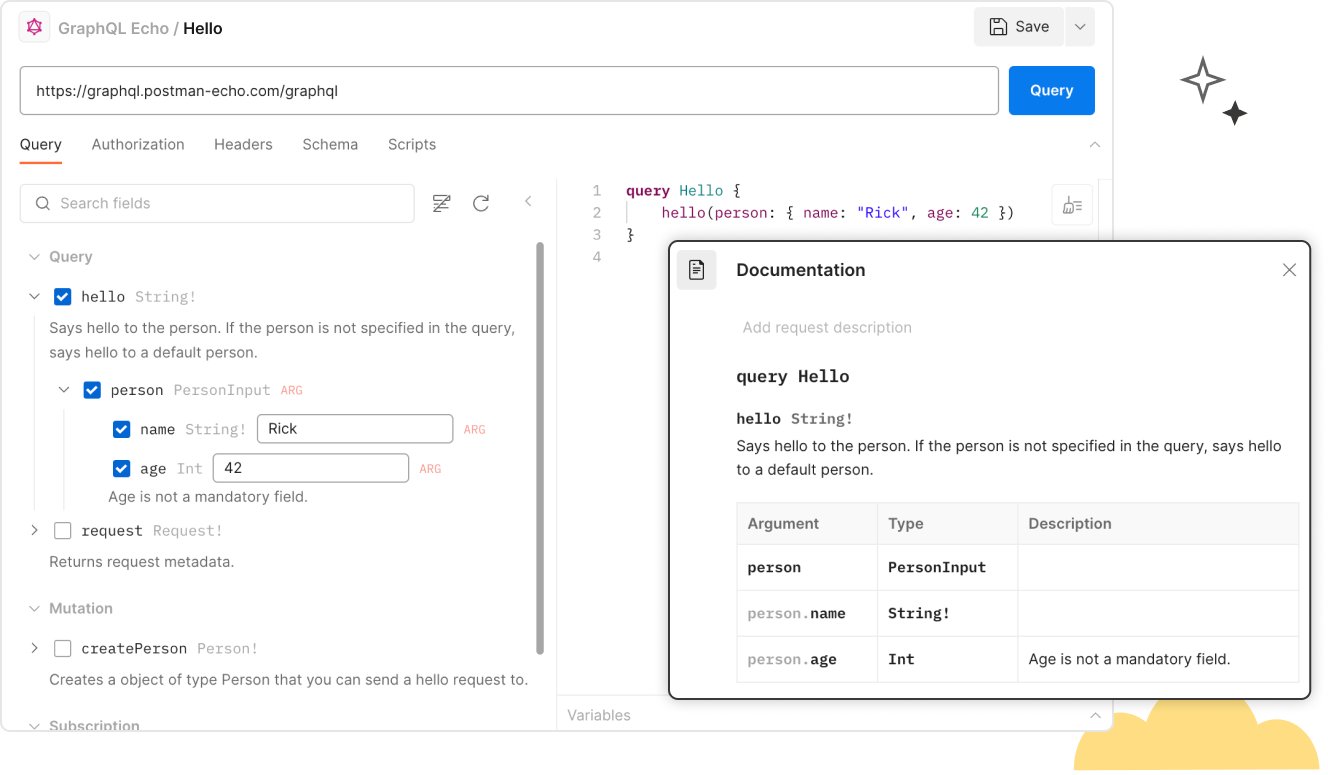
Build GraphQL queries effortlessly with the query builder
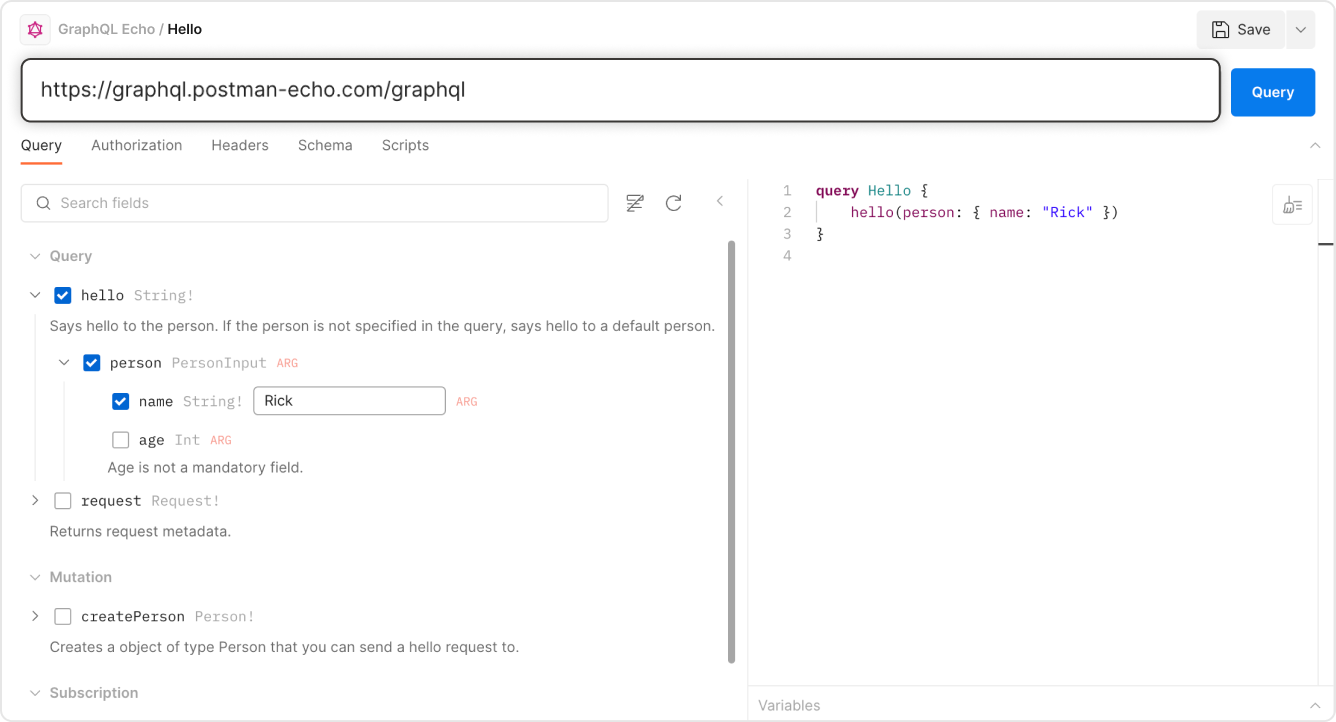
Explore and import GraphQL schemas easily
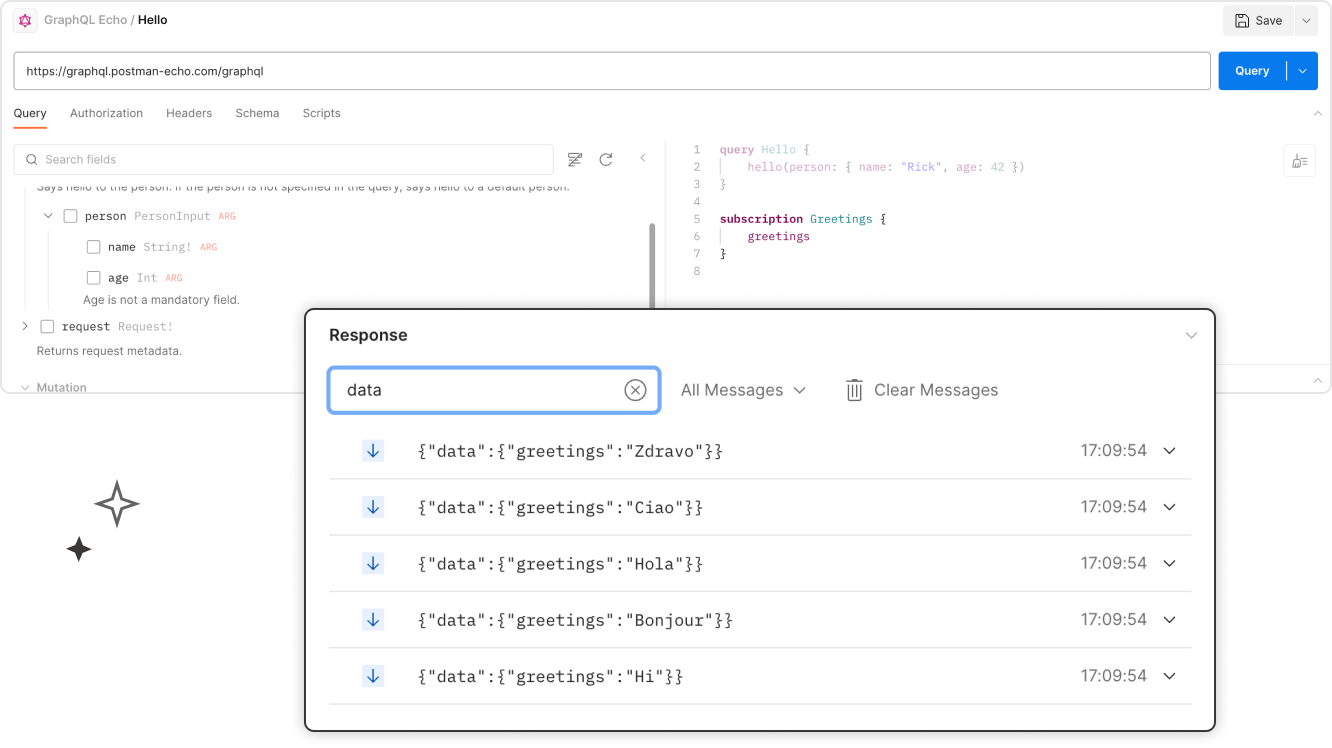
View and analyze GraphQL responses
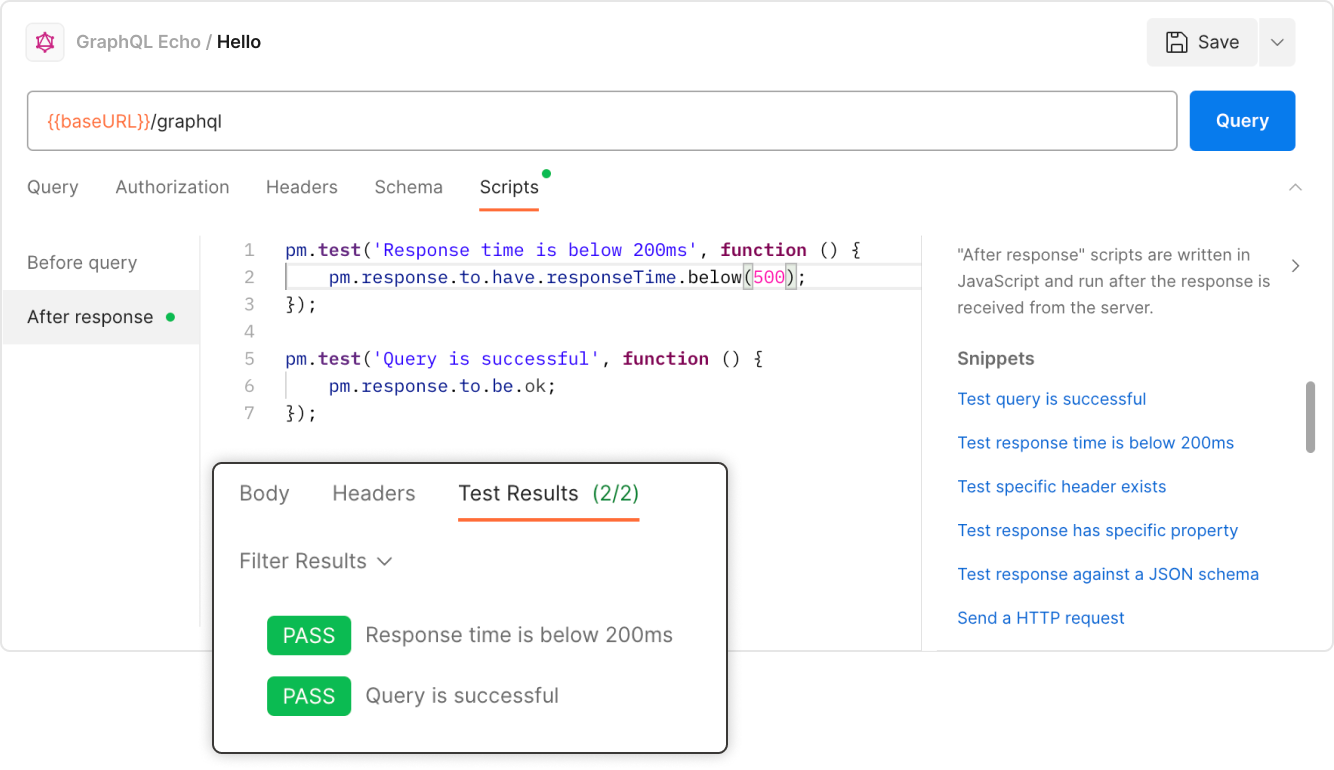
Leverage Postman's core API client features
What other protocols does the Postman API client support?
Postman is more than just an API client—it's an API platform that simplifies each step of the API lifecycle and enables teams around the world to collaborate more efficiently. In addition to gRPC, the Postman API client also supports:
REST
The Postman API client enables users of all experience levels to call, test, and debug any REST API in a matter of minutes.
gRPC
Postman users can easily invoke unary, client-streaming, server-streaming, and bi-directional streaming gRPC methods—and leverage autocomplete hints when composing a gRPC message.
SOAP
Postman's SOAP client makes it easy to compose request bodies in XML—and it automatically adds the application/xml content type header to the request, as well.
WebSocket
Postman streamlines the process of connecting to a WebSocket API server—and enables users to compose and send WebSocket messages, search through the message stream, and listen for specific events.
What is a GraphQL client, and what can you do with one?
GraphQL is an open source query language for APIs that enables developers to interact with a single endpoint and specify the exact data they need. There are three GraphQL operation types: queries, mutations, and subscriptions. Queries retrieve data, mutations create and manipulate data, and subscriptions fetch live data over a persistent connection. A GraphQL client streamlines developer workflows by making it easier to assemble and debug any GraphQL operation—while providing full visibility into the API's available data.
Get started today
Join the millions of developers who are already developing their APIs faster and better with Postman.
Your AI strategy is only as strong as your APIs.
Postman helps teams collaboratively build APIs that power workflows and intelligent agents. With support for the Model Context Protocol (MCP), your APIs are integration ready. Learn how top teams avoid pitfalls and rescue APIs from chaos.